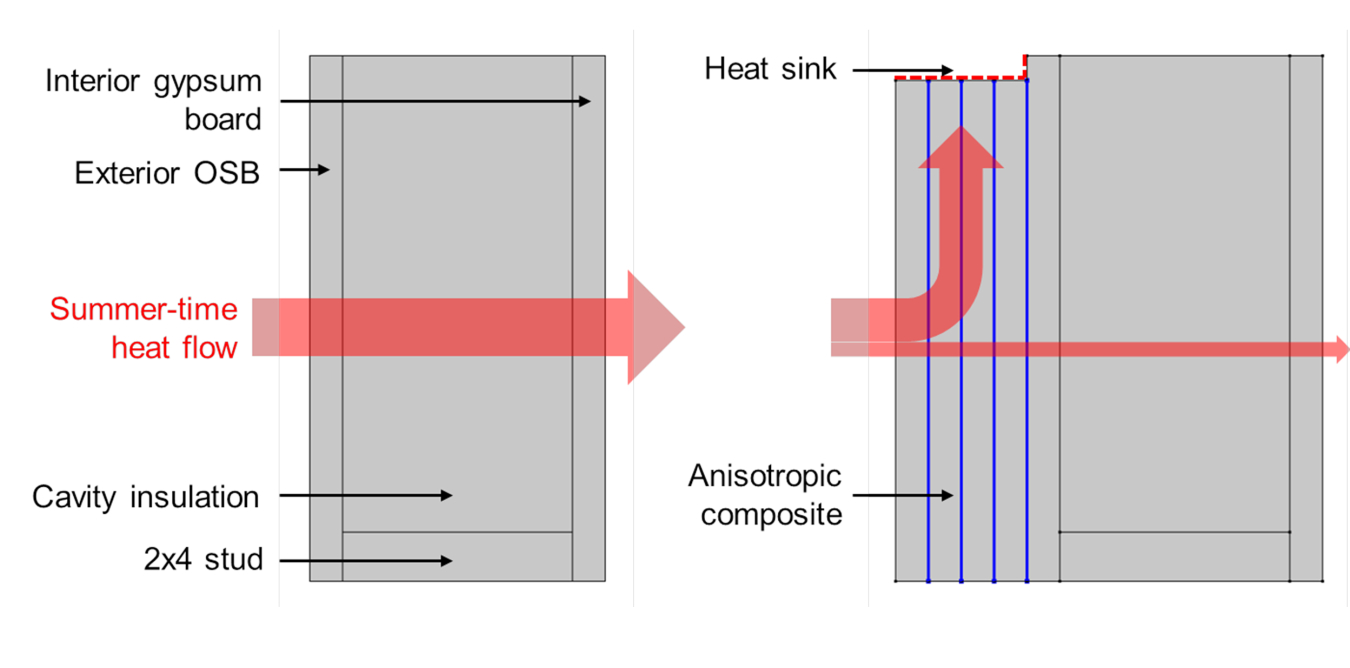Lead Performer: Oak Ridge National Laboratory – Oak Ridge, TN
March 4, 2019
Lead Performer: Oak Ridge National Laboratory – Oak Ridge, TN
DOE Total Funding: $1,452,000
FY19 DOE Funding: $483,000
Project Term: October 1, 2018 – September 30, 2021
Funding Type: Lab Call
Project Objective
In 2010, the primary energy consumption attributed to the residential building envelope (roofs and walls) was 3.4 quadrillion Btu. Finite element simulations showed that the application of thermally anisotropic composites (TACs) could reduce heat gains through walls by 75% or more compared to walls with cavity and exterior insulation; the findings were verified via laboratory experiments on 8’-by-8’ wall sections in a climate chamber. TACs coupled with a heat sink/source is a novel technology that can redirect and reduce unwanted heat flows through the building envelope. This project aims to optimize the design of TAC systems for walls and roofs using lab test results from FY18, running additional lab tests in FY19 and simulation studies.
Performance of the optimized systems will be evaluated in ORNL’s natural exposure test facilities, and the results will be extrapolated through simulation studies using calibrated models to estimate performance under various weather conditions.
Project Impact
As a conservative estimate, assuming the application of the anisotropic concept to a fraction of buildings, we can expect 15% reductions in overall energy consumption attributed to walls and roofs. In addition to the energy savings, proposed technology can also shave peak energy demand, and provide resilience in power outages, especially during extreme heat events.
Contacts
DOE Technology Manager: Sven Mumme
Lead Performer: Som Shrestha, Oak Ridge National Laboratory

